Weevils in Flour - Learn Effective Ways to Get Rid of Weevils
Grain weevils are remarkably bothersome pests. Interestingly enough, they appear not only in kitchens and pantries, but basically anywhere grains and grain products are stored. It's common for them to show up in stores, bakeries, and households where goods are stored improperly. Are they your problem as well? Check what wheat weevils don't like and learn how to get rid of them quickly.
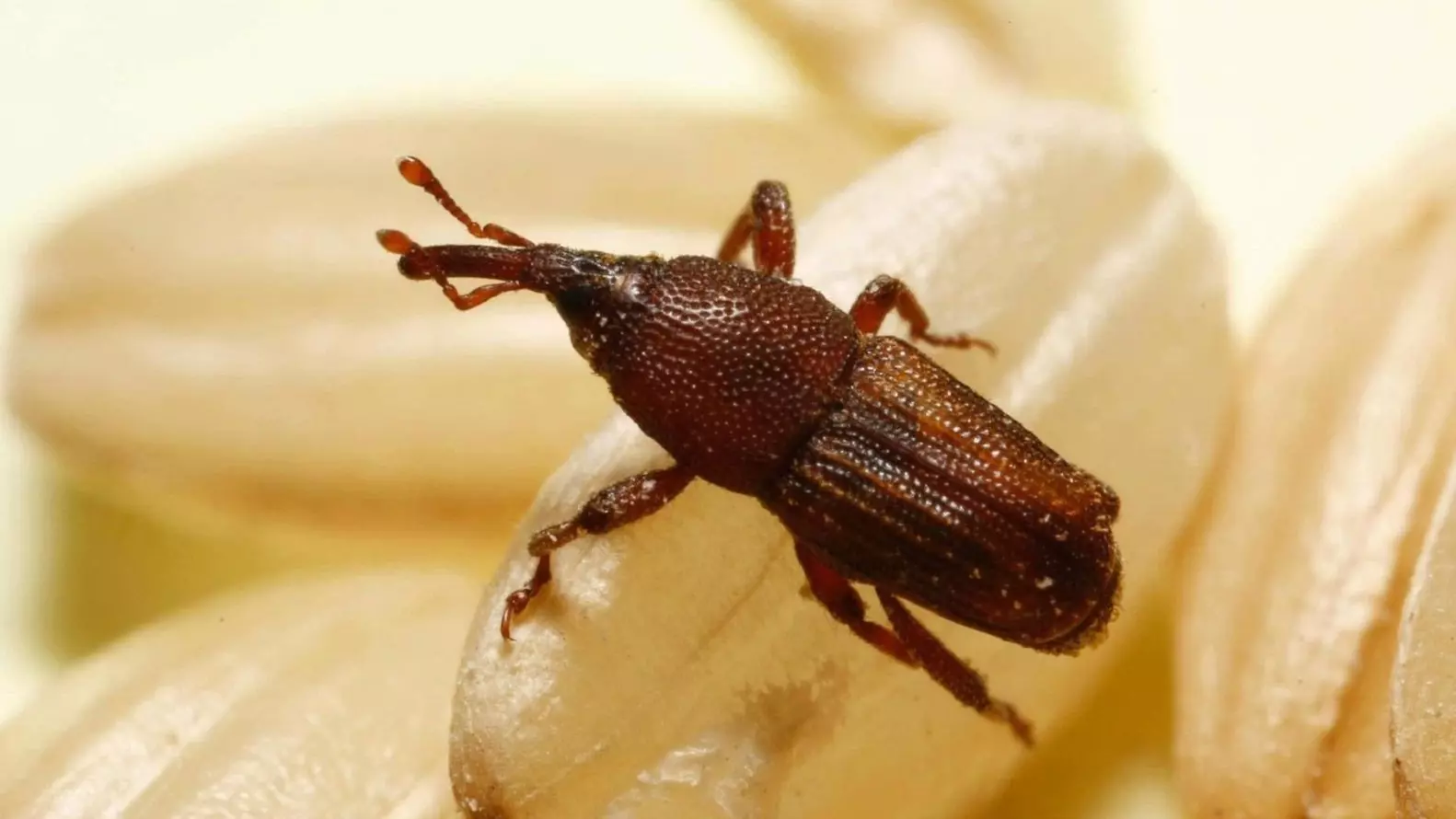
The grain weevil – what kind of pest is it?
The wheat weevil, more precisely _Sitophilus granarius _is one of the many pests that attack stored goods, especially grain. It’s a small beetle which prefers a nocturnal lifestyle. It feeds mostly on grains, and for this reason it’s particularly dangerous to farm crops. Without a proper control over their storage system, the pests might multiply at a rapid rate.
Interestingly enough, weevils inhabit not only large warehouses. This pesky beetle frequently appears in many households.
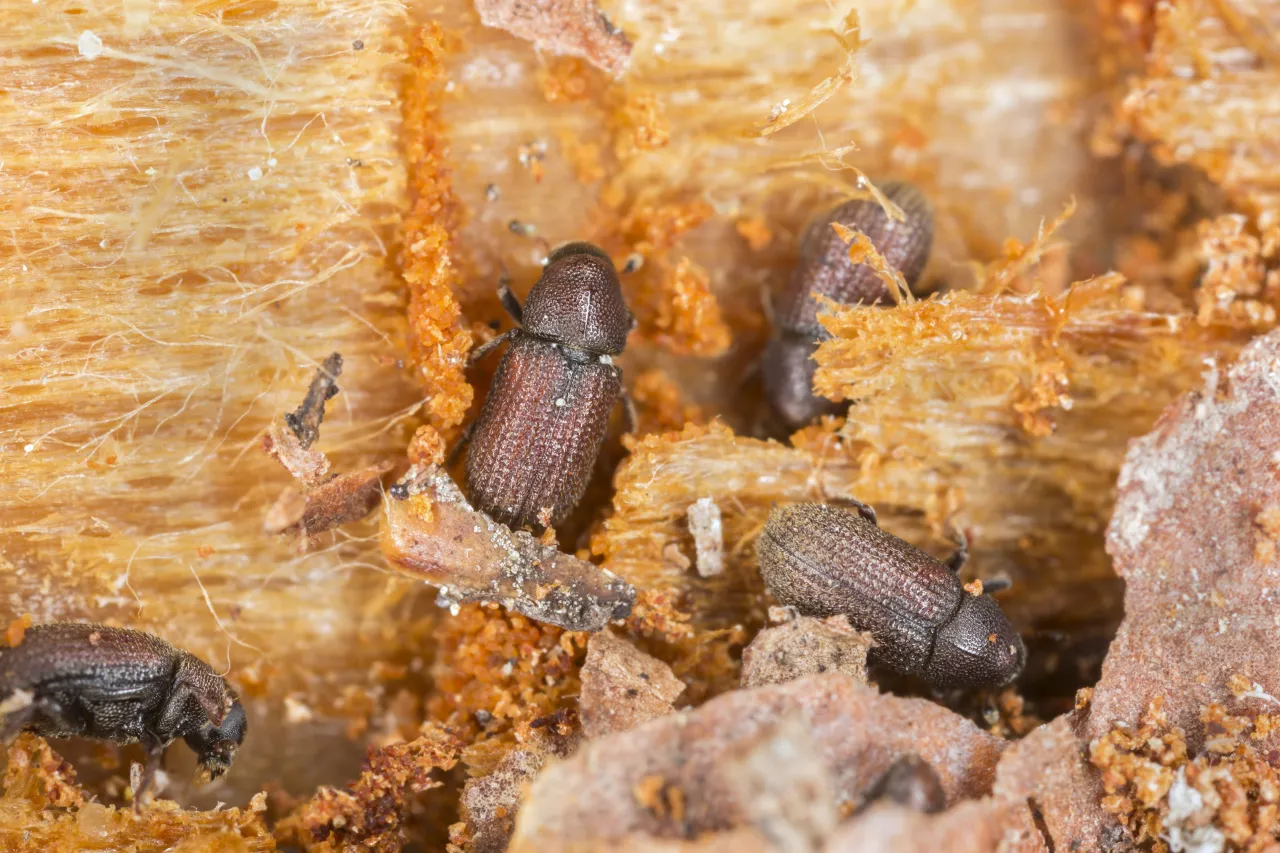
What does the wheat weevil look like?
The wheat weevil is a small beetle which can grow up to 5 mm (ca. 0.2 in) long. Its body shape might vary, depending on the grain the larvae hatches from. Typically, the beetles have quite slender bodies.
The beetle is covered with a shiny, black or brown, chitinous carapace. Despite its characteristic shape, the grain weevil doesn’t have wings like e.g., pantry moths. The pest’s head is relatively small compared to the rest of the body, and it’s ended with an elongated mouthpart. The beetle has three pairs of strong legs.
The insect prefers a nocturnal lifestyle. That’s when you are most likely to encounter it – that’s when it searches for food.
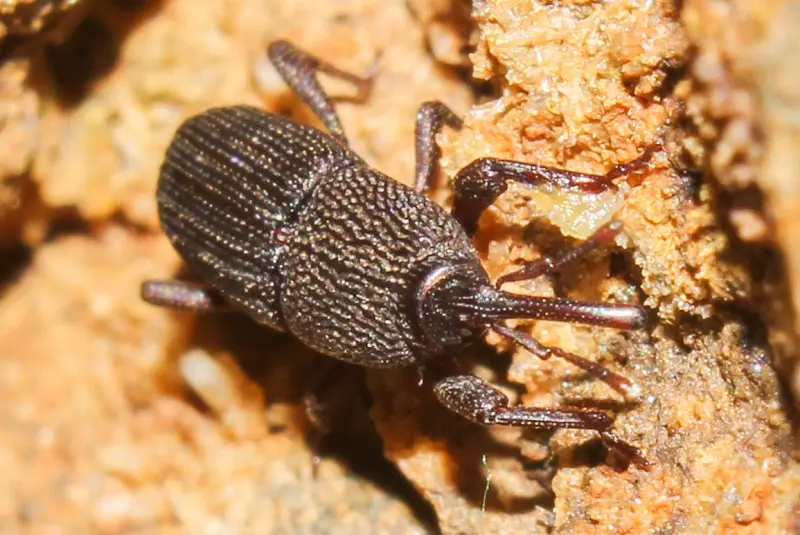
Where do weevils come from?
The wheat weevil is a rapidly-multiplying house bug. Female beetles lay their eggs directly in grains. They use their mouths to carve holes in them, and close them with saliva. Typically, a female weevil lays a single egg in a single grain. Corn is the only exception, where she may fit more than one egg.
A single weevil female can lay up to 150 eggs, but it’s not a rule. Some lay as many as 700 eggs. The frequency differs, as she may lay from one to nine eggs per day. Everything depends on the conditions the insects live in.
Why should you be concerned about the grain weevil? The larvae hatch after about 10 days, and they begin feeding themselves. At first, the pest is difficult to spot, as the larvae eat the inside of the grains they hatched into. The grain weevil turns into an adult insect inside the grain.
Where do grain weevils may appear in your house?
The beetle feeds not only in grain warehouses – the wheat weevil is a common unwanted guest in many households. It typically attacks places where rice, corn, and other grain products are stored.
The pest may attack:
- almonds,
- nuts,
- oats,
- pastas.
Wheat weevils multiply quickly in high humidity and at a proper room temperature.
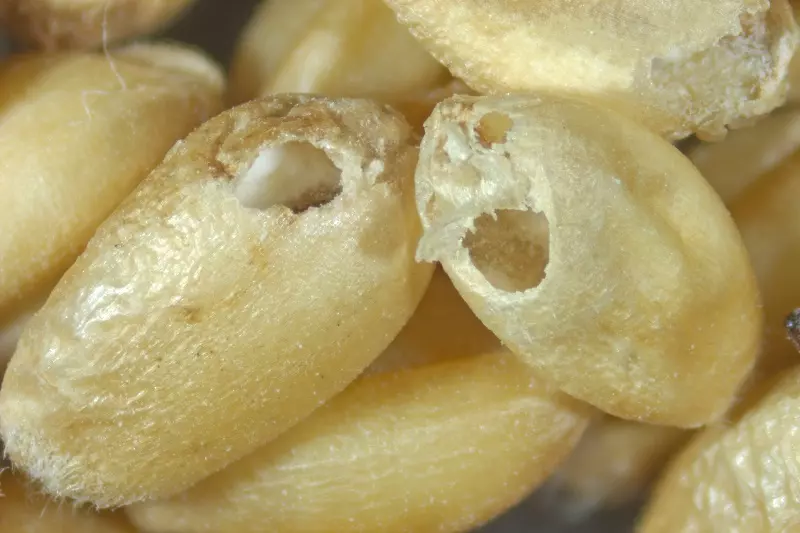
Is the grain weevil dangerous?
The wheat weevil usually appears in places where grains are stored. But what if it decides to turn your pantry into its nesting place? Does the wheat weevil pose a danger to humans? The destruction of crops is the most significant threat – and if nothing is done, it might cause major damage.
But the grain weevil in the house is also a danger. As a single beetle, it’s not harmful – it doesn’t bear any poison nor bites. It doesn’t feed on human blood, but prefers grains and flour-based products. Regardless, it might cause various allergic reactions, including pulmonary alveolitis. For this reason, the presence of this insect should never be ignored, regardless whether it’s in a silo or a house.
How to get rid of weevils in flour and grains
The wheat weevil is a typical warehouse pest. But if you notice it in your house, don’t ignore it. Make sure to take the necessary steps to get rid of the insect as fast as you can.
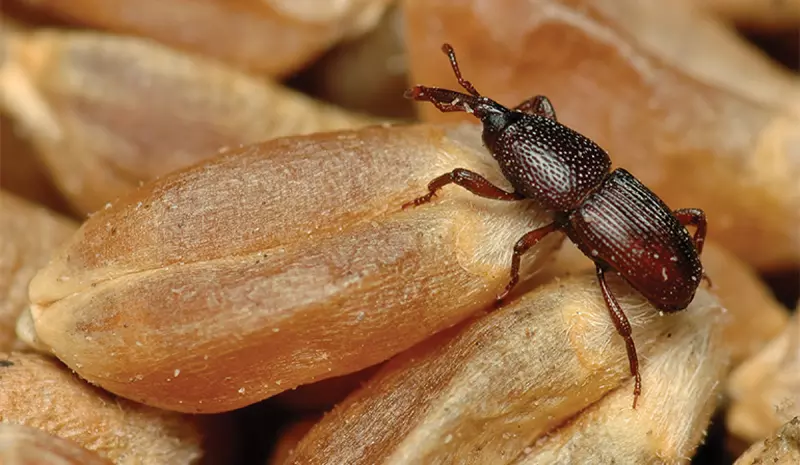
Securing the food properly
Securing and storing the food in a proper way is the most important habit to develop in your household. Open any freshly bought grain-based product and move the contents into an airtight container. Store such goods in a cool and dry place – in contrast to what wheat weevils prefer.
Wheat weevils and noise
The grain weevil is an insect that definitely dislikes noise. Make sure to check your pantry shelf regularly and move the containers around. This will cause the weevils to come out of their hiding, and you might be able to get rid of them before they breed to more significant numbers.
The grain weevil and low temperatures
The beetles don’t tolerate low temperatures. If you want to kill the wheat weevil, refrigerate the containers in which you noticed the insect. Keep them in the fridge for at least a month. You can make the process much faster by placing the containers in a freezer for 24 hours.
Wheat weevil traps
Glue traps are an effective method to get rid of grain weevils. The glue makes the pest immobile, thanks to which you can easily get rid of it. You can choose from various types of traps, e.g., with a pheromone or food lure.
What temperature kills wheat weevils?
The wheat weevil doesn’t tolerate both low and high temperatures. The temperature of -15°C (5°F) affecting the beetle for a minimum of 24 hours is a perfect way to kill adult insects, larvae, and eggs. 60°C (140°F) is another threshold. The grain weevil cannot survive such a temperature. Both extremes are effective ways to get rid of the pest.

📍 What is the wheat weevil?
The grain weevil is a type of beetle. It's considered one of the most significant insects that might appear in warehouses storing food. What does the wheat weevil look like? The beetle has an elongated 3 to 5 mm long body.
📍 What do wheat weevils do?
Wheat weevils can be typically encountered in storehouses and silos. They attack stored grains and other grain, starch-rich products.
📍 The wheat weevil – where does it come from?
The female wheat weevil usually lays one egg per one grain. It bites into it, lays an egg, and cements the hole using its saliva. Corn seeds are the only exception, as the insect can lay several eggs in a single grain, in this case. The pests can be brought home with purchased food – it's a simple way to get an infestation.
📍 How to get rid of wheat weevils?
Wheat weevils are insects that don't like noise, therefore, they won't occupy noisy areas. Instead, they hide in corners. Freezing is a powerful way to get rid of grain weevils. A temperature lower than -15°C (5°F) for at least 24 hours kills the pests effectively.
Featured articles




